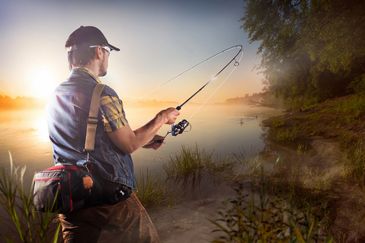
Welcome
From the Great Lakes Basin to the Ocean...
Protecting water one drop at a time.

Protecting water one drop at a time.

"Lake2Ocean" (L2O) is a philanthropic organization dedicated to preserving and restoring the water quality of the Great Lakes and beyond. The Great Lakes, holding 20% of the world's freshwater and 90% of the fresh water in the United States, are vital for the environment, economy, and communities surrounding them and beyond. They are pri
"Lake2Ocean" (L2O) is a philanthropic organization dedicated to preserving and restoring the water quality of the Great Lakes and beyond. The Great Lakes, holding 20% of the world's freshwater and 90% of the fresh water in the United States, are vital for the environment, economy, and communities surrounding them and beyond. They are pristine glacial deposits from past millennia, threatened by modern day industry and shipping with the introduction of pollution and invasive species, both plant and animal, from around the world.

Our mission is to advocate for and implement sustainable practices to ensure the lakes remain a pristine source of water for future generations. We will achieve this through building awareness, governmental advocacy, community engagement and services, scientific research, and collaboration with other organizations and stakeholders. Our g
Our mission is to advocate for and implement sustainable practices to ensure the lakes remain a pristine source of water for future generations. We will achieve this through building awareness, governmental advocacy, community engagement and services, scientific research, and collaboration with other organizations and stakeholders. Our goal is to also create a "one-stop-shop" portal to connect advocacy groups from local areas within the Great Lakes Basin and more.

Besides the lakes themselves, there are over 94,000 square miles of Great Lakes basin - the surrounding land that feeds water to them. It's the equivalent size of the states of NY, NJ, CT, MA and NH combined.

A drop of water entering Lake Superior takes over 200 years to empty out of the Great Lakes ecosystem and into the Atlantic ocean. This is why the pollution impact in these lakes is such a serious matter.

Nearly 10% of the US population or 35 million people, and nearly 30% of the population in Canada live on the lands that surround the Great Lakes. The lake system is where they get their fresh water for everyday use.

International ships never entered the Great Lakes system until the early canals were built.
Global shipping into and out of the lakes has introduced invasive species, both plant and animal. When ships load and unload they fill and dump their bilges, introducing water from around the world along with "hitchhikers".
There are many invasive species that require constant mitigation at a significant cost to taxpayers. The damage to infrastructure requires labor and equipment to constantly monitor, and repair the damages.

One invasive animal is known as the Zebra Muscle.
They are originally from the lakes and rivers in the Black, Caspian, and Azov seas.
Zebra mussels have become an invasive species in many parts of the world, especially in North America and Europe. They were first detected in North America in the Great Lakes in the late 1980s, likely brought over in ballast water from ships.
They thrive in freshwater environments and can attach themselves to various surfaces, including rocks, water pipes, boat hulls, and even other mussels.
They can significantly alter ecosystems by filtering large amounts of plankton from the water, which affects the food web. Their presence can lead to the decline of native aquatic populations.
They also cause considerable damage to infrastructure by clogging water intake pipes, fouling boat hulls, and damaging engines and water systems.

Invasive plants in the Great Lakes region pose significant ecological, economic, and recreational challenges.
These plants often outcompete native species, leading to reduced biodiversity, altered habitats, and negative impacts on water quality and wildlife. One of the most notable species is the Eurasian Watermilfoil which is a submerged aquatic plant with feathery, whorled leaves and a red stem. It forms dense mats that hinder water recreation, outcompete native plants, and alter fish habitats inhibiting their ability to breed.
It spreads through fragmentation; boaters can inadvertently spread it between water bodies.
Invasive plants in the Great Lakes region highlight the importance of vigilant monitoring, rapid response, and coordinated management efforts to protect native ecosystems and maintain the health and biodiversity of these vital water bodies.

Your Support is Needed!
Imagine the helm of a grand sailing ship, guiding us through vast waters toward a destination of better ecology. The wheel in your hands represents the power to navigate through challenges and steer us toward a brighter horizon. We invite you to take hold of this wheel and join us on an incredible journey.
At Lake2Ocean, we are dedicated to advocating for our waters, both fresh and salty. Much like skilled sailors navigating turbulent seas, we face obstacles and challenges. But with your help, we can stay the course and reach our destination.
It Matters as we:
Every donation, no matter the size, acts as a guiding hand on the wheel, helping us navigate through uncharted waters. Your generosity is the compass that directs our efforts and ensures we remain on course toward making a lasting difference.
You can help by:
Together, we can turn the tide and steer toward a future where our waters are preserved for generations to come. Your support is the wind in our sails, propelling us forward.
Thank you for being a vital part of our journey!

Simply click the Donate Today button below to make a one time donation. Contact us to create ongoing support.
Copyright © 2024 Lake2Ocean - All Rights Reserved.
Think of us every time you drink a glass of water.
We use cookies to analyze website traffic and optimize your website experience. By accepting our use of cookies, your data will be aggregated with all other user data.